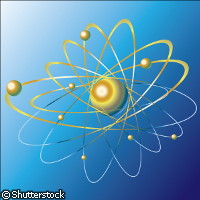EU-funded researchers unveil new technique for measuring charge states
Scientists in Germany, the Netherlands and Switzerland have successfully measured the charge states of individual gold and silver atoms using an innovative approach to atomic force microscopy (AFM). Their findings, reported in the journal Science, are important for the study of technologically important processes in physics and chemistry, and have implications for the development of single-electron devices. The results are an outcome of the Nanoman ('Control, manipulation and manufacture on the 1-10nm scale using localised forces and excitations') project, funded with EUR 1.5 million under the 'Nanotechnologies and nanosciences, knowledge-based multifunctional materials and new production processes and devices' thematic area of the EU's Sixth Framework Programme (FP6). According to the study, the charge state is an important property affecting many processes in physics and chemistry, and can be exploited in single-electron devices. 'To be able to measure that with AFM allows us to perform these measurements on insulators, which are technologically very relevant materials,' explained Dr Leo Gross of IBM Research in Zurich, Switzerland in a Science podcast interview. In addition to providing valuable insights into catalytic processes, Dr Gross said: 'In photovoltaics it would be nice to measure the charge distribution of a charge transfer complex with atomic precision.' Past experiments using scanning tunnelling microscopy (STM) have allowed researchers to probe the charge state of single atoms, but the crucial drawback in these experiments has been that STM doesn't work with insulators (insulators are necessary to keep charges separate from one another). Results of studies using non-contact AFM have been promising; however, the technique applies oscillations in the 10 to 50 angstrom range while oscillations of closer to 1 angstrom are necessary to achieve adequate image resolution. The researchers combined AFM with a technique called 'Kelvin prove force microscopy', which involves imaging at cryogenic temperatures, and looked at the charge state of gold atoms absorbed on a very thin sodium chloride film; they confirmed their results by looking at silver atoms using the same system. 'We used the technique called qPlus sensor, which is a very small tuning fork, like in wrist watches, where one prong of the beam is fixed and the other one holds the tip,' Dr Gross explained. The beam is a cantilever (supported on only one end); cantilevered beams are widely used in microelectromechanical systems; without cantilever transducers, AFM would not be possible. 'We were able to incorporate this sensor into our already existing low-temperature STM setup,' he added. 'The benefit of this qPlus sensor is that it can oscillate very small amplitudes because it's a very stiff cantilever. So we were able to record and measure with oscillation amplitudes of only 0.2 angstrom (about a tenth of an atom's diameter). These small oscillation amplitudes are important to reach [...] atomic resolution.' The experiments were carried out in ultra-high vacuum conditions and at temperatures of liquid helium (about 4.2 Kelvin), conditions highly favoured by the qPlus sensor. 'The low temperatures are needed not only for the stability of the measurement apparatus, but also the whole system. The single atom on the insulating layer would not be stable at room temperature,' explained Dr Gross. The researchers found that both positive and negative charges on the atoms increase the force on the AFM tip just a little bit. This in turn creates an electrostatic force that is not present in the atom's neutral state, so it was possible for the researchers to determine whether the gold and silver atoms were positively charged, negatively charged, or neutral. Their method demonstrates that non-contact AFM can be used to image single atoms or molecules, and that it can be used to detect the charge state of single atoms on thin insulating films. In an accompanying editorial, Ernst Meyer and Thilo Glatzel of the University of Basel write that 'the new technique has tremendous consequences for the field of molecular electronics'. The fact that the researchers could carry out their experiments without wiring the object of interest was a major achievement, they say; it is hoped that the new method can be extended to molecules or molecular networks. 'Now AFM offers the possibility to go on thicker insulating film and bulk insulators; this is important if you want to investigate for example charged transport in planar molecular films or single molecular devices or molecular networks - then you should really have a thicker insulating film where you have no leakage of electrons through the insulating layer,' said Dr Gross. The researchers plan to use their technique on thicker insulating films or bulk insulators, and to investigate molecules and molecule metal complexes using this system. 'What we're really interested in is to measure charge transport and charge distribution in such networks,' said Dr Goss. The modified AFM technique is expected to lead to valuable new insights into energy sources, molecular electronics, photonics and catalysis.
Countries
Switzerland, Germany, Netherlands



